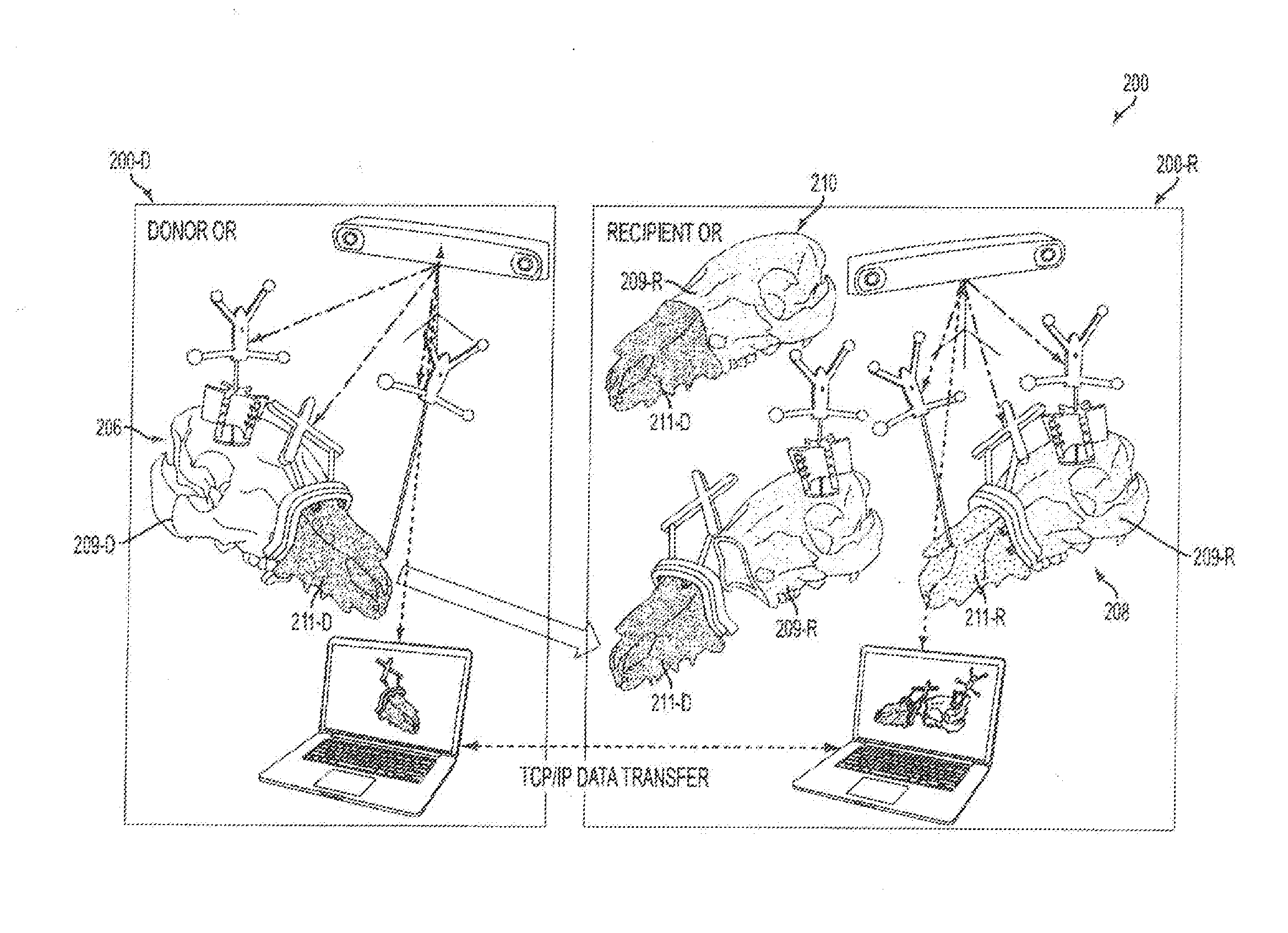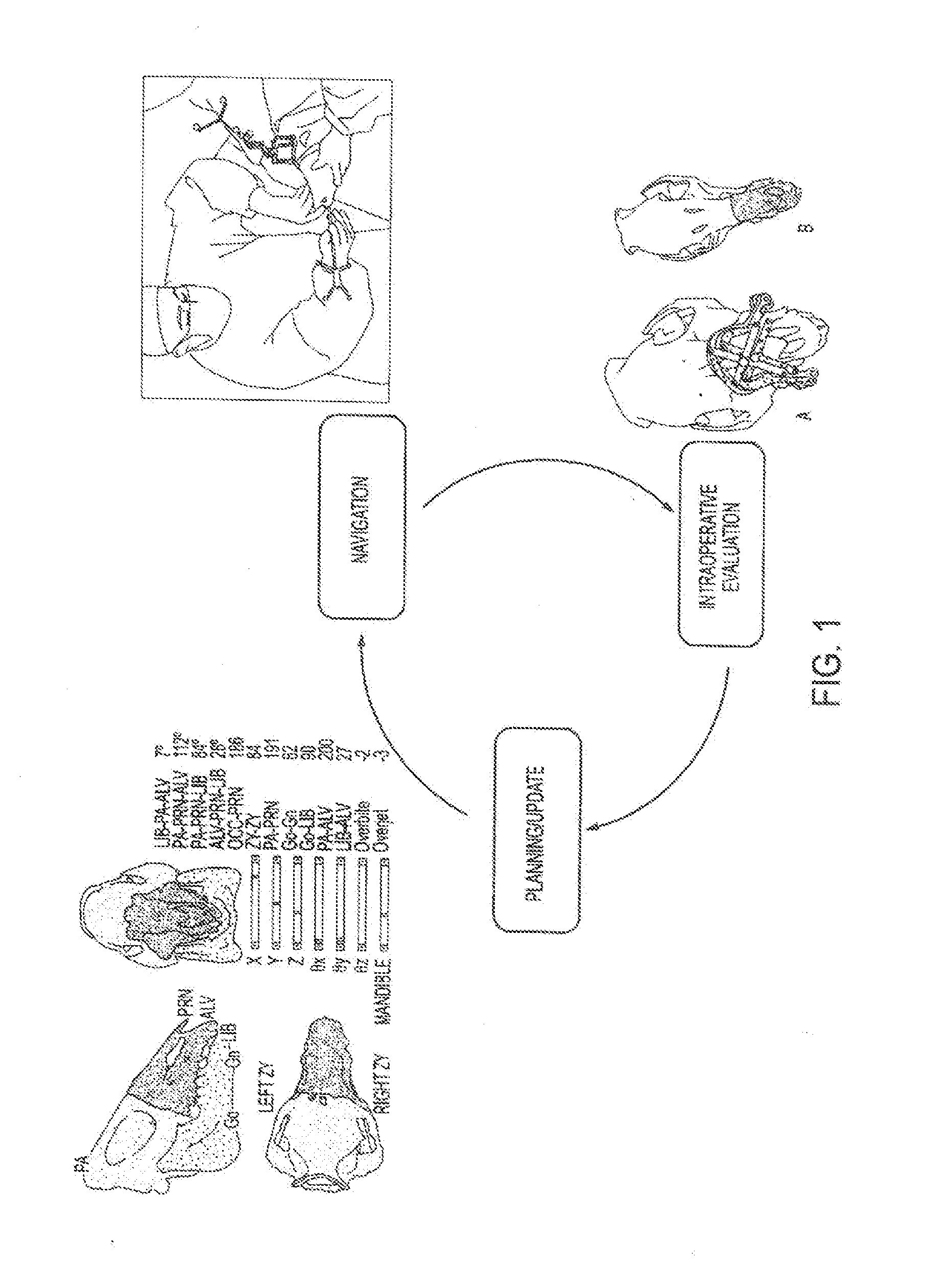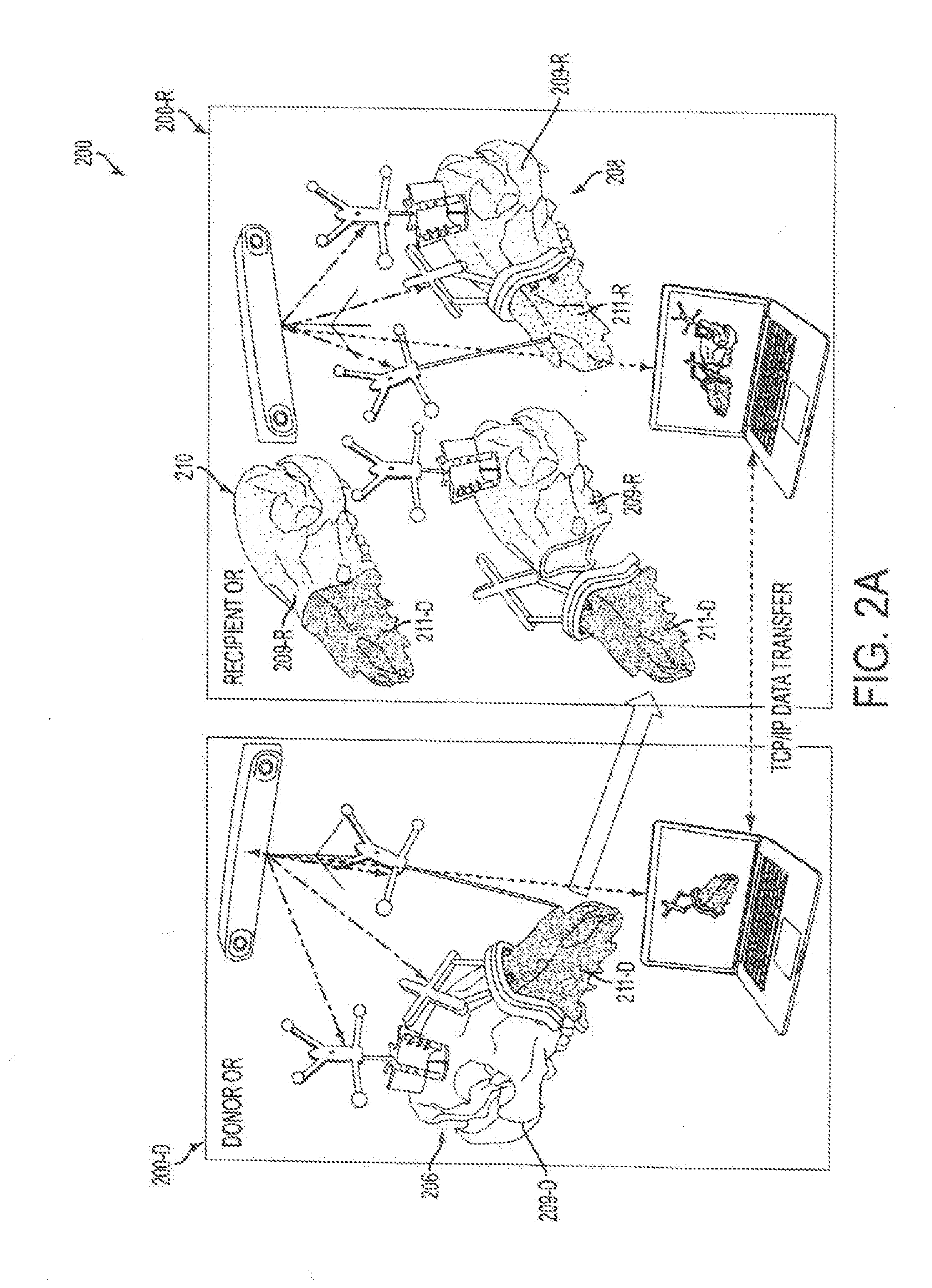Computer-assisted planning and execution system
a computer-aided planning and execution system technology, applied in the field of surgery, can solve problems such as inability to validate the optimization method, inability to provide custom features for reducing problems, and inability to accurately place guides, so as to improve outcomes, reduce accompanying morbidity, and increase the robustness of conventional cas paradigms.
- Summary
- Abstract
- Description
- Claims
- Application Information
AI Technical Summary
Benefits of technology
Problems solved by technology
Method used
Image
Examples
example 1
[0082]Live transplant surgeries (n=2) between four size-mismatched swine investigated whether or not an embodiment could actually assist a surgical team in planning and in executing a desired surgical plan. As shown in FIGS. 9A-9B, the first live surgery confirmed the proposed utility of overcoming soft and hard tissue discrepancies related to function and aesthetics. The final occlusal plane within the first recipient was ideal and consistent with the virtual plan as seen on lateral cephalogram as shown in FIG. 10C. Pre-operative functional predictions of donor-to-recipient occlusion were realized based on cephalometric analyses as shown in FIG. 9C performed both before and after surgery. Soft tissue inconsistencies of the larger-to-smaller swine scenario were also reduced following the predicted movements of face, jaw and teeth as shown in FIG. 10D.
[0083]The second live surgery showed improved success as compared to its predecessor due to surgeon familiarity and technology modific...
example 2
[0087]Female and male donor heads (n=2), double-jaw, Le Fort III-based alloflaps were harvested using handheld osteotomes, a reciprocating saw, and a fine vibrating reciprocating saw. Both osteocutaneous alloflaps were harvested using a double-jaw, Le Fort III-based design (a craniomaxillofacial disjunction), with preservation of the pterygoid plates, incorporating all of the midfacial skeleton, complete anterior mandible with dentition, and overlying soft tissue components necessary for ideal reconstruction.
[0088]Prior to transplantation, both scenarios were completed virtually given the gender-specific challenges to allow custom guide fabrication as shown in panels A-H of FIG. 12. Once assimilated, the donor orthognathic two-jaw units were placed into external maxilla-mandibular fixation (MMF) using screw-fixated cutting guides to retain occlusal relationships during the mock transplants as shown in panels A-D of FIG. 13.
[0089]As shown in FIGS. 13, 14A-14B, an embodiment of a cutt...
PUM
 Login to View More
Login to View More Abstract
Description
Claims
Application Information
 Login to View More
Login to View More - R&D
- Intellectual Property
- Life Sciences
- Materials
- Tech Scout
- Unparalleled Data Quality
- Higher Quality Content
- 60% Fewer Hallucinations
Browse by: Latest US Patents, China's latest patents, Technical Efficacy Thesaurus, Application Domain, Technology Topic, Popular Technical Reports.
© 2025 PatSnap. All rights reserved.Legal|Privacy policy|Modern Slavery Act Transparency Statement|Sitemap|About US| Contact US: help@patsnap.com



